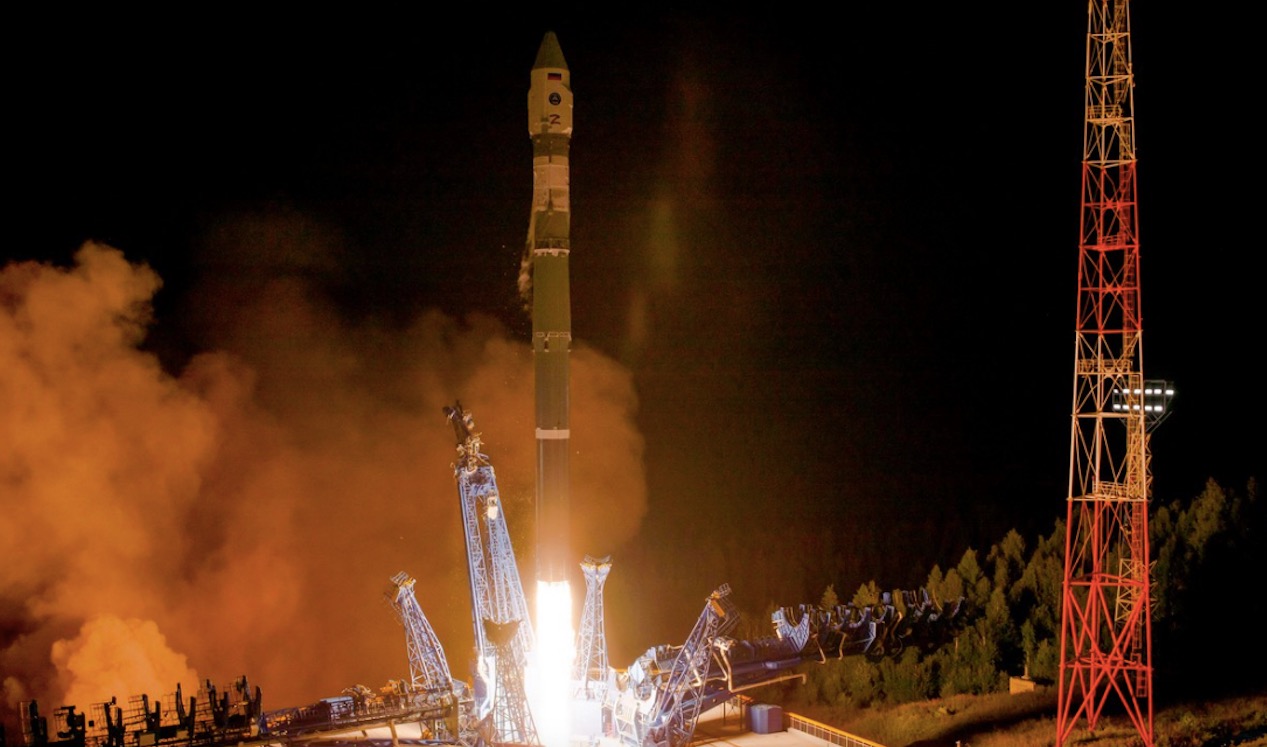
A newly launched Russian spy satellite may be tasked with stalking one of its American counterparts.
The Russian satellite, known as Kosmos 2558, was rumored to be an "inspector" craft even before it lifted off on Monday (Aug. 1), Netherlands-based satellite tracker Marco Langbroek noted in a blog post on Tuesday (Aug. 2). And those rumors are unlikely to die down anytime soon.
Kosmos 2558 launched into the same orbital plane as USA 326, an American spy satellite that rode a SpaceX Falcon 9 rocket to orbit this past February, Langbroek noted. The two satellites are close in altitude as well, and they're scheduled to have a relatively close encounter soon, provided neither one performs any significant maneuvers over the next day or so.
Related: Declassified US spy satellite photos & designs
"With the current orbit, Kosmos 2558 will make a relatively close approach to USA [326] at August 4 near 14:47 UTC [10:47 a.m. EDT]," Langbroek wrote. "The approach distance is ~75 km [47 miles]; almost all of that (73 km [45 miles]) is in altitude."
To be fair, USA 326 does seem to be pretty interesting. The classified American satellite ejected something recently — either a subsatellite or a piece of debris — according to astrophysicist and satellite tracker Jonathan McDowell, who's based at the Harvard-Smithsonian Center for Astrophysics.
It wouldn't be shocking if Kosmos 2558 were a spysat stalker. After all, two Russian satellites maneuvered within about 100 miles (160 km) of the United States' USA 245 spacecraft in early 2020, as Langbroek noted.
Get the Space.com Newsletter
Breaking space news, the latest updates on rocket launches, skywatching events and more!
American officials weren't pleased with that apparent orbital inspection.
"We view this behavior as unusual and disturbing," Gen. John "Jay" Raymond, chief of space operations for the U.S Space Force, told Time magazine at the time. "It has the potential to create a dangerous situation in space."
Is Kosmos 2558 up to the same sorts of tricks? "It will be interesting to follow both satellites [in] the coming weeks, to see what happens," Langbroek wrote.
Mike Wall is the author of "Out There" (Grand Central Publishing, 2018; illustrated by Karl Tate), a book about the search for alien life. Follow him on Twitter @michaeldwall. Follow us on Twitter @Spacedotcom or on Facebook.
Join our Space Forums to keep talking space on the latest missions, night sky and more! And if you have a news tip, correction or comment, let us know at: community@space.com.

Michael Wall is a Senior Space Writer with Space.com and joined the team in 2010. He primarily covers exoplanets, spaceflight and military space, but has been known to dabble in the space art beat. His book about the search for alien life, "Out There," was published on Nov. 13, 2018. Before becoming a science writer, Michael worked as a herpetologist and wildlife biologist. He has a Ph.D. in evolutionary biology from the University of Sydney, Australia, a bachelor's degree from the University of Arizona, and a graduate certificate in science writing from the University of California, Santa Cruz. To find out what his latest project is, you can follow Michael on Twitter.









